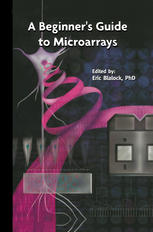

Most ebook files are in PDF format, so you can easily read them using various software such as Foxit Reader or directly on the Google Chrome browser.
Some ebook files are released by publishers in other formats such as .awz, .mobi, .epub, .fb2, etc. You may need to install specific software to read these formats on mobile/PC, such as Calibre.
Please read the tutorial at this link: https://ebookbell.com/faq
We offer FREE conversion to the popular formats you request; however, this may take some time. Therefore, right after payment, please email us, and we will try to provide the service as quickly as possible.
For some exceptional file formats or broken links (if any), please refrain from opening any disputes. Instead, email us first, and we will try to assist within a maximum of 6 hours.
EbookBell Team

4.7
96 reviewsA Beginner's Guide to Microarrays addresses two audiences - the core facility manager who produces, hybridizes, and scans arrays, and the basic research scientist who will be performing the analysis and interpreting the results. User friendly coverage and detailed protocols are provided for the technical steps and procedures involved in many facets of microarray technology, including:
-Cleaning and coating glass slides,
-Designing oligonucleotide probes,
-Constructing arrays for the detection and quantification of different bacterial species,
-Preparing spotting solutions,
-Troubleshooting spotting problems,
-Setting up and running a core facility,
-Normalizing background signal and controlling for systematic variance,
-Designing experiments for maximum effect,
-Analyzing data with statistical procedures,
-Clustering data with machine-learning protocols.